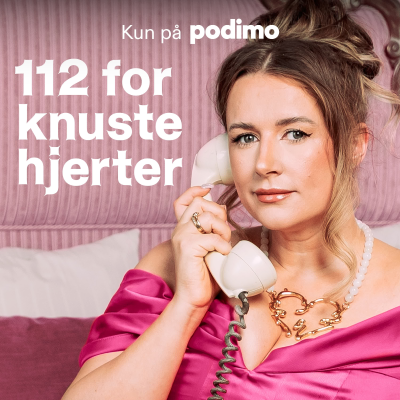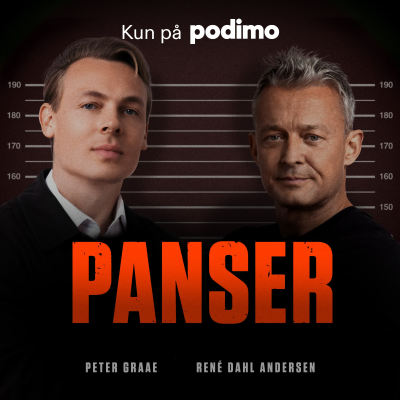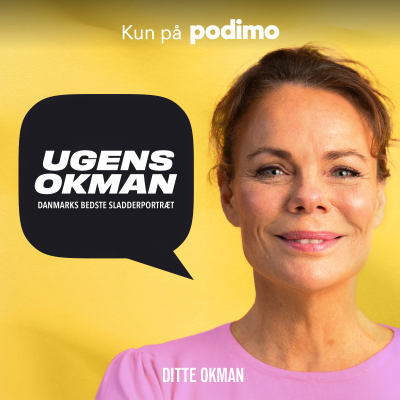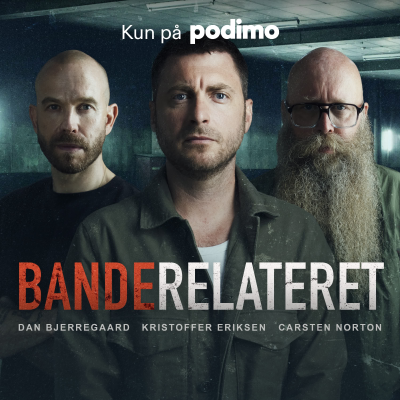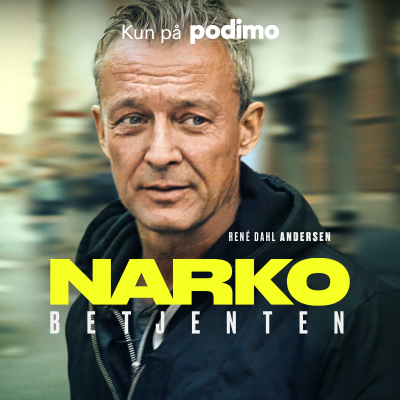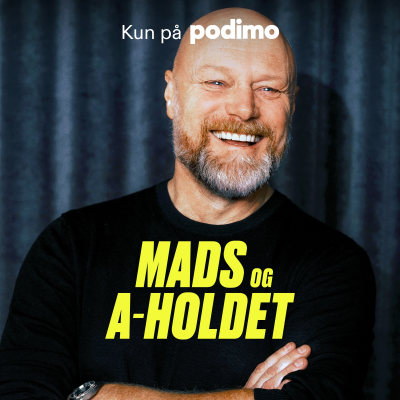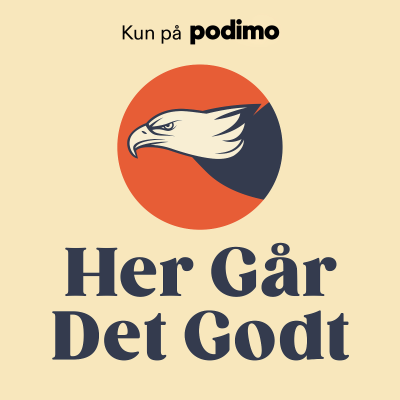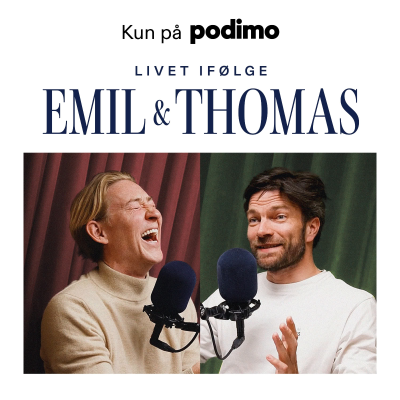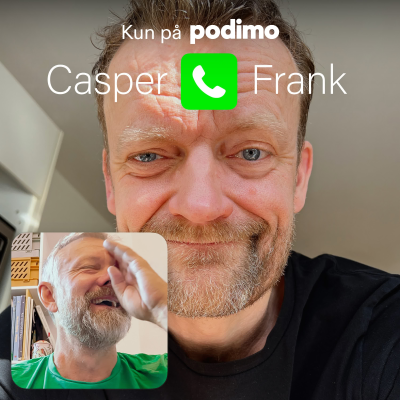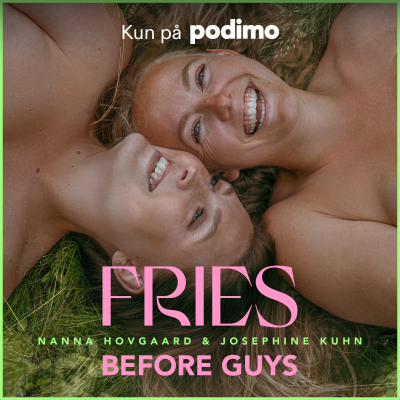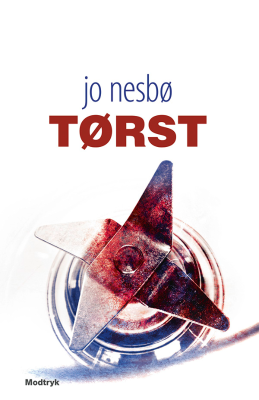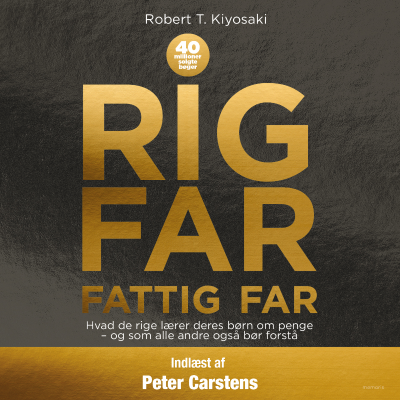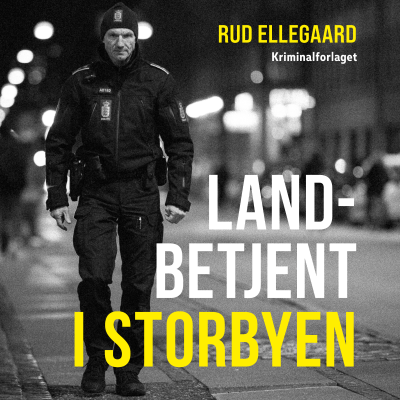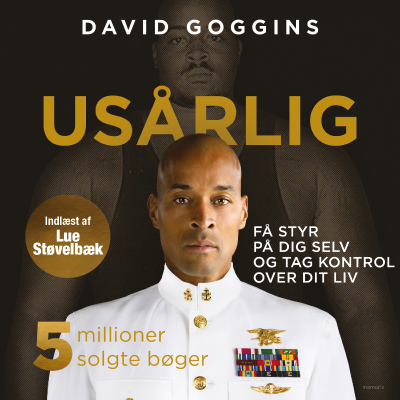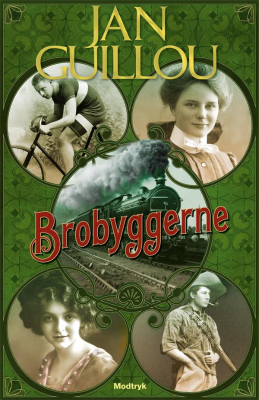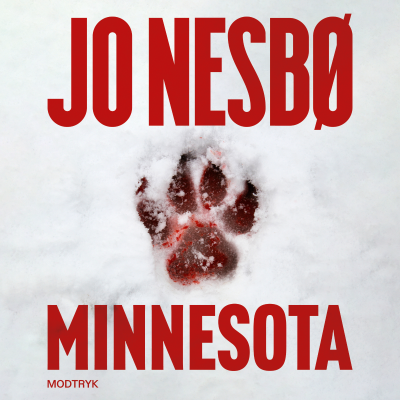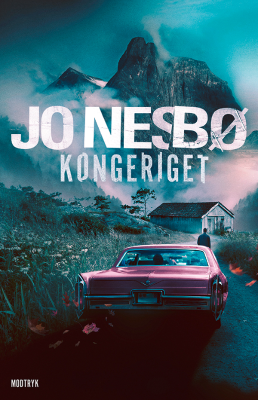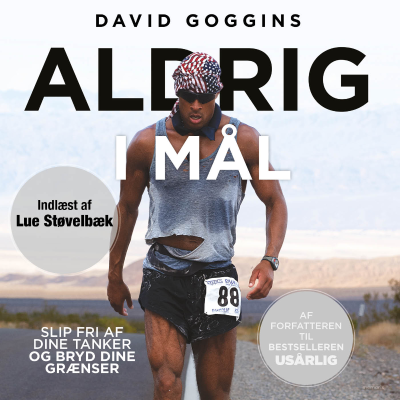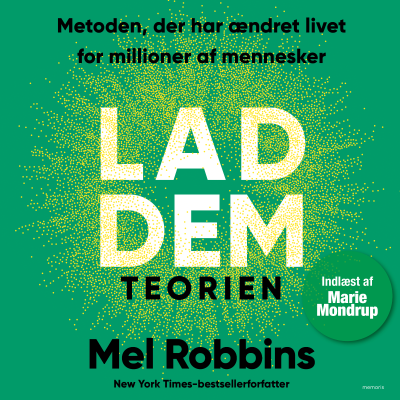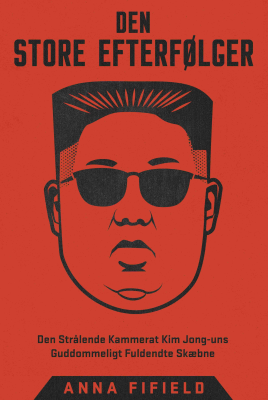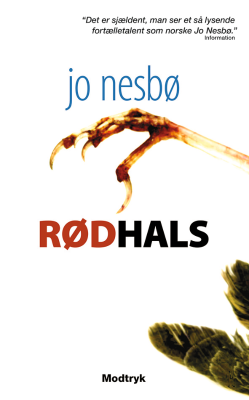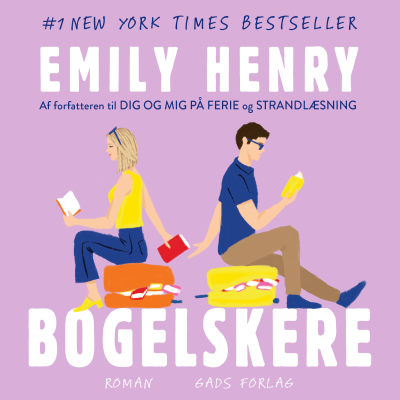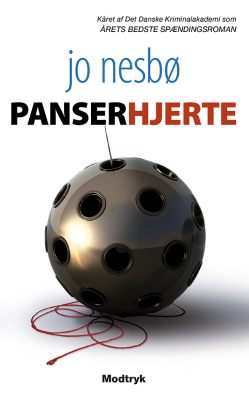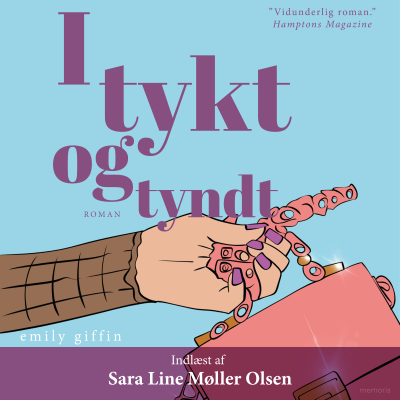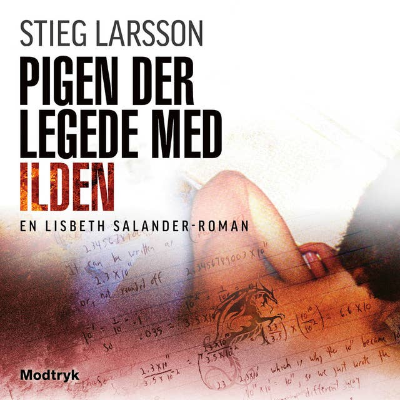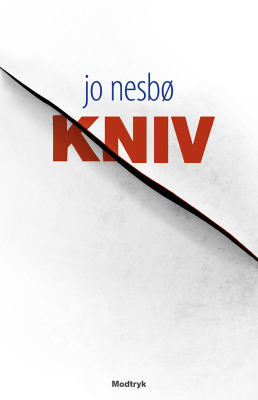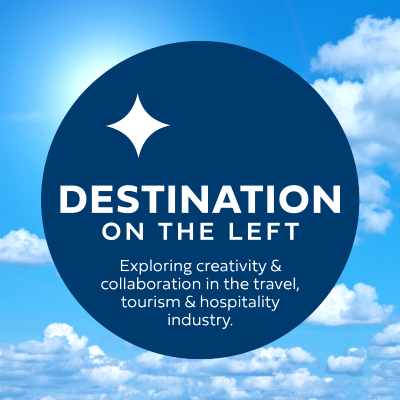
Destination On The Left
engelsk
Business
Begrænset tilbud
1 måned kun 9 kr.
Derefter 99 kr. / månedOpsig når som helst.
- 20 lydbogstimer pr. måned
- Podcasts kun på Podimo
- Gratis podcasts
Læs mere Destination On The Left
Destination On The Left is a travel and tourism industry podcast hosted by Travel Alliance Partnership. Each episode explores successful collaborations, creative marketing ideas and best practices for both consumer and travel trade marketing programs. Interviews are a mix of Destination Marketers, Industry Leaders, Consultants and businesses in the industry.
Alle episoder
457 episoder456. How Travel Priorities Have Evolved, with Erin Groh
On this episode of Destination on the Left, I talk with Erin Groh, Head of Marketing at iSeatz, a leading but often behind-the-scenes travel tech company powering loyalty programs for brands like American Express, IHG Hotels & Resorts, and Qantas. Erin shares her fascinating career journey from traditional and digital media through to travel technology, illustrating how influencer marketing, social media, and travel tech are now converging to reshape the modern travel experience. Listeners will find out why today's travelers are prioritizing dream trips—even if it means rebalancing their budgets, how social media now influences every step of the travel decision-making funnel, and the evolving expectations around personalization, including what travelers are willing to share for better experiences. What You Will Learn in This Episode: * How iSeatz powers major brands like American Express and Delta's travel loyalty programs * What the iSeatz Modern Traveler Report reveals about travelers' motivations and how budget constraints impact trip decisions * How travelers are rebalancing their spending, cutting back on dining and shopping in favor of travel experiences * Why social media and influencer marketing have become leading sources of travel inspiration and purchase decisions, especially among Gen Z and Millennials * What "value" really means to today's travelers, and how expectations for personalization in travel are evolving * How sustainability is shaping travel choices and what the industry can do to make sustainable options easier for consumers Technology-Powered Loyalty Programs Most travelers may not recognize iSeatz by name, but they've likely interacted with its technology. Erin explains how iSeatz works behind the scenes with iconic brands like American Express, Delta, and IHG Hotels and Resorts, powering the platforms that make booking and redeeming travel rewards seamless. As the connectivity layer, iSeatz enables partnerships, keeps loyalty programs fresh, and continually adapts to new technologies and consumer expectations. Collaborative relationships between travel brands and tech providers aren't just helpful, they're essential, especially when consumer demands and industry dynamics are rapidly evolving. Today's travelers expect fluid, rewarding experiences, and companies have to innovate to keep pace. Dream Trips Are Non-Negotiable One of the most striking findings of The iSeatz Modern Traveler Report is the traveler's commitment to making dream trips happen—even when budgets are tight. According to Erin, only 9% of survey respondents said they'd give up on a dream trip due to cost. Instead, the majority would wait and save, seek more affordable options, or cut back in other areas of their spending. This aligns with a broader trend, post-pandemic revenge travel wasn't just a blip; it's part of a sustained shift toward prioritizing experiences over material goods. Spending priorities have also evolved, travelers would rather cut back on dining out or shopping if it means affording a meaningful trip. Data shows year-over-year growth in travel spending for several consecutive years. The desire for shared memories and adventure continues to outweigh the allure of consumer goods. Value and Personalization Define the Modern Experience Price isn't always the most important thing when it comes to travel, value now encompasses the entire experience—meeting expectations, comfort, relaxation, wellness, and safety. Travelers increasingly splurge on nicer hotels or premium flight experiences if they perceive real value in the investment. Over half of travelers expect brands to anticipate their needs based on past interactions, and a similar proportion are willing to share more personal data to enable a smoother, more tailored journey. The challenge (and opportunity) lies in connecting the dots by using the right data to surface relevant recommendations, like family-friendly activities, sustainable options, or dietary preferences, rather than missing the mark with generic suggestions. Resources: * Website: https://www.iseatz.com/ [https://www.iseatz.com/en/] * LinkedIn Personal: https://www.linkedin.com/in/erinrosegroh/ [https://www.linkedin.com/in/erinrosegroh/] * LinkedIn Business: https://www.linkedin.com/company/iseatz/ [https://www.linkedin.com/company/iseatz/] * Unpacking the Complexities of the Modern Traveler: Key Insights From Our 2025 Report: https://www.iseatz.com/blog/the-modern-traveler-2025 [https://www.iseatz.com/blog/the-modern-traveler-2025] We value your thoughts and feedback and would love to hear from you. Leave us a review on your favorite streaming platform to let us know what you want to hear more o f. Here is a quick tutorial on how to leave us a rating and review [https://support.apple.com/guide/podcasts/rate-or-review-pod5facd9d70/mac] on iTunes!
455. Making Travel Accessible and Eco-Friendly Across Europe, with Oliver Winter
On this episode of Destination on the Left, I talk with Oliver Winter, CEO and Founder of a&o Hostels, for an inspiring conversation about his entrepreneurial journey, from traveling on a shoestring budget to building one of the largest hostel brands in the world. We talk about his focus on being a cost leader, not a price leader, and how that translates to a guest experience that works for small pockets while still serving the needs of his guests. Oliver also shares his passion for sustainability and how his company has been able to move from an 18-kilogram per guest carbon footprint to just a 3.8-kilogram per guest carbon footprint. What You Will Learn in This Episode: * How Oliver turned his personal travel experiences into founding one of the largest hostel brands in Europe * Why being a cost leader (rather than just a price leader) shapes a&o Hostels' unique value proposition and guest experience * What makes the hostel guest experience distinctive, especially in terms of shared spaces, social atmosphere, and accommodation variety * How a&o Hostels attracts diverse customer segments―from student groups to families, digital nomads, and backpackers―and the distribution strategies that work for them * Why sustainability became a central focus for a&o Hostels, and how they've reduced their carbon footprint by over 80% per guest overnight * What's next for a&o Hostels, including the big announcement of a new luxury budget brand to extend their reach and serve evolving traveler needs Creating Value Without Compromise One of the cornerstone philosophies for a&o Hostels is being a "cost leader," not just a "price leader." This means that they streamline operations and get rid of unnecessary frills while keeping the essentials, like comfort and safety, readily accessible. The hostels boast large capacities (an average of 800 beds per location), centralized operations, and shared facilities, striking a balance between affordability and a vibrant, social guest experience. Rather than confining the traveler's experience to private rooms, a&o focuses on engaging common areas, such as 24/7 bars, kids' zones, and flexible working spaces. These communal amenities give great opportunities for people to connect, appealing to families, digital nomads, student groups, and backpackers. The model values shared spaces over luxury and, in doing so, builds community. Evolving Guest Profiles and Modern Distribution Channels a&o Hostels caters to a wide range of guests, with profiles shifting based on season and day of the week. Midweek guests are often student groups and school tours, while weekends and holidays attract families and independent travelers. The brand is found on major OTAs like Booking.com and Expedia, but has also cultivated a strong direct booking channel via their own website. The flexibility in room types, from single or twin rooms for teachers and families to dorm-style accommodations for groups, further enhances their accessibility. This adaptable approach enables a&o to welcome anyone from school-aged travelers to budget-conscious business guests. Sustainability as a Core Company Value Beginning in 2015, Oliver and his team took a pioneering approach by closely tracking and reducing their carbon footprint per guest. Initially, a&o's footprint was already lower than average (18kg CO₂e per overnight stay, compared to 25kg at home), primarily thanks to shared spaces and efficient building use. But instead of settling, a&o set their sights higher. Through targeted operational changes—reducing waste, switching to renewable energy contracts, limiting disposables, and leveraging automation—they slashed their footprint by 80% to just 3.8kg per guest. What's more, many sustainability initiatives actually resulted in cost savings, debunking the myth that going green is always expensive. Resources: * Website: https://www.aohostels.com/ [https://www.aohostels.com/en/] * LinkedIn Personal: https://www.linkedin.com/in/oliver-winter-berlin/ [https://www.linkedin.com/in/oliver-winter-berlin/] * LinkedIn Business: https://www.linkedin.com/company/aohostels/ [https://www.linkedin.com/company/aohostels/] We value your thoughts and feedback and would love to hear from you. Leave us a review on your favorite streaming platform to let us know what you want to hear more o f. Here is a quick tutorial on how to leave us a rating and review [https://support.apple.com/guide/podcasts/rate-or-review-pod5facd9d70/mac] on iTunes!
454. What Makes Atlantic Canada's Tourism Scene Unique, Atlantic Canada Roadshow 2025 Part 2
We're taking you on a road trip through the future of tourism in Atlantic Canada. You'll hear firsthand from tourism leaders on how the region captivates new generations of travelers while staying true to its maritime roots. We also spotlight the rise of Indigenous-led travel experiences and the wave of creativity from local artisans. From group travel trends to the power of regional collaboration, each story underscores how Atlantic Canada's tourism pros aren't just adapting—they're shaping what meaningful travel looks like for the years ahead. In this episode, you'll hear from these knowledgeable tourism leaders: * Molly Vail: https://www.linkedin.com/in/molly-vail/ [https://www.linkedin.com/in/molly-vail/] * Nancy Petrie: https://www.oakislandresort.ca/ [https://www.oakislandresort.ca/] * Natalie Kaftan: https://www.linkedin.com/in/nataliekaftan/ [https://www.linkedin.com/in/nataliekaftan/] * Katherine Verreault: https://www.linkedin.com/in/katherine-verreault [https://www.linkedin.com/in/katherine-verreault] * Kelley Keefe: linkedin.com/in/kelley-keefe-07841a1a6 [http://linkedin.com/in/kelley-keefe-07841a1a6] * Robert Thomas: https://www.linkedin.com/in/robert-thomas-225165161/ [https://www.linkedin.com/in/robert-thomas-225165161/] * Desirea Goodyear: https://www.linkedin.com/in/desirea-goodyear-77294a26b/ [https://www.linkedin.com/in/desirea-goodyear-77294a26b/] * Tasha Robitaille: https://www.linkedin.com/in/tasha-robitaille-0a790029/ [https://www.linkedin.com/in/tasha-robitaille-0a790029/] * Wahab Khan: https://www.linkedin.com/in/wahab-khan-b809862ab/ [https://www.linkedin.com/in/wahab-khan-b809862ab/] * Jacob Sheehan: https://www.linkedin.com/in/jacob-sheehan-71ba578b/ [https://www.linkedin.com/in/jacob-sheehan-71ba578b/] * Jen Silliphant: https://www.linkedin.com/in/jen-silliphant/ [https://www.linkedin.com/in/jen-silliphant/] What You Will Learn in This Episode: * How Atlantic Canadian tourism leaders are embracing innovation and sustainable growth to shape the future of travel in the region * Why collaboration and partnership is essential for delivering impactful guest experiences * What trends are emerging in traveler interests, including immersive cultural experiences, wellness tourism, and eco-friendly adventures * How the region is adapting to the rising interest from younger travelers, families, and international visitors * Why authenticity, local culture, and culinary experiences are setting Atlantic Canada apart as a travel destination * How Indigenous tourism and wellness-focused offerings are growing and diversifying the visitor experience * What successful creative collaborations look like in practice Innovation Rooted in Community Collaboration Community lies at the heart of Atlantic Canada's tourism ethos. This spirit of partnership, as showcased at the Atlantic Canada Showcase event, has made the region a model for collaborative success. Provinces, cities, and businesses work hand-in-hand to offer amazing visitor experiences and nurture economic growth. Four provinces unite to market the region, develop meaningful partnerships, and promote the Maritimes. These collaborations aren't just behind the scenes—they tangibly widen access for visitors and amplify the region's reach in international markets. Authenticity is the Maritime Edge If there's one word repeated by tourism leaders throughout the episode, it's "authenticity." Atlantic Canada isn't about cookie-cutter vacations; it's about experiences crafted by the local communities. Molly Vail from Discover Halifax highlights how the city blends youthful energy with maritime charm, offering guests handcrafted itineraries that range from vineyards to vibrant nightlife. Natalie Kaftan of Tauck emphasizes the enduring appeal of the Maritimes' local character and color. Visitors are drawn to real people, unique food, and meaningful cultural exchanges, not just passive sightseeing. As travel trends shift worldwide, immersive itineraries and authentic local engagement are increasingly in demand. Whether it's an Acadian caviar tasting in New Brunswick or a craft-making workshop in Mahone Bay, guests are eager for stories and experiences that go beyond the surface. Growing Demand for Indigenous and Wellness Experiences Indigenous-led tourism is gaining extraordinary momentum in Atlantic Canada. Robert Thomas from the Newfoundland and Labrador Indigenous Tourism Association shares how guests now seek engagement with indigenous cultures—culinary experiences, guided hikes with elders, and artistic workshops are just the beginning. Tasha Robitaille's La Belle Cabane healing sanctuary offers a blend of wellness and indigenous knowledge, where visitors can participate in breathwork sessions, explore Métis traditions, and join healing retreats that are as restorative as they are educational. This surge in interest reflects a broader travel trend: visitors crave deeper connection, healing, and learning as much as recreation. Ultimately, Atlantic Canada Showcase itself, described as "intimate," "impactful," and "powerful" by my guests, epitomizes the region's strengths. Small size becomes an advantage, enabling tight-knit partnerships, genuine hospitality, and real dialogue among industry leaders. Whether partnering across cities or developing cross-province itineraries, success is shared and multiplied. We value your thoughts and feedback and would love to hear from you. Leave us a review on your favorite streaming platform to let us know what you want to hear more o f. Here is a quick tutorial on how to leave us a rating and review [https://support.apple.com/guide/podcasts/rate-or-review-pod5facd9d70/mac] on iTunes!
453. News from the Atlantic Canada Roadshow 2025 Part 1
This week on Destination on the Left, we bring you the first special roadshow installment from the Atlantic Canada Showcase 2025 in beautiful Saint John, New Brunswick. In this episode, we dive into the deep-rooted community spirit and storytelling tradition that make Atlantic Canada such a fantastic destination. You'll hear firsthand from passionate tourism professionals across the region, who will share powerful insights on how authenticity, connection, and collaboration are shaping travel experiences in Atlantic Canada—offering everything from local cuisine and hands-on adventures to heritage attractions and indigenous-led hospitality. Get ready to discover why Atlantic Canada continues to redefine what it means to experience genuine hospitality. In this episode, you'll hear from these extraordinary leaders: * Aubrey Reine: https://www.linkedin.com/in/aubrey-reine-30913062/ [https://www.linkedin.com/in/aubrey-reine-30913062/] * Annick Robichaud-Butland: https://www.linkedin.com/in/annick-robichaud-butland-bb436b68/ [https://www.linkedin.com/in/annick-robichaud-butland-bb436b68/] * Christy Elliott: https://balsamridgeforestdomes.ca/ [https://balsamridgeforestdomes.ca/] * Melissa Lansing: https://www.linkedin.com/in/melissa-lansing/ [https://www.linkedin.com/in/melissa-lansing/] * Chelsey Gould: linkedin.com/in/chelsey-gould [http://linkedin.com/in/chelsey-gould] * Olivia Morley: https://www.linkedin.com/in/olivia-morley-0a2627171/ [https://www.linkedin.com/in/olivia-morley-0a2627171/] * Judith LaBrie: ca.linkedin.com/in/judith-labrie-49a46315 [http://ca.linkedin.com/in/judith-labrie-49a46315] * Lois Whitlock: https://wolastoqcasino.com/ [https://wolastoqcasino.com/] * Rebecca Whiffen: https://www.linkedin.com/in/rebecca-whiffen-a89934320/ [https://www.linkedin.com/in/rebecca-whiffen-a89934320/] * Xavier Gauvin: https://tourismepeninsuleacadienne.ca/en/ [https://tourismepeninsuleacadienne.ca/en/] * Jordan Jamison: https://www.linkedin.com/in/jordan-jamison-nb/ [https://www.linkedin.com/in/jordan-jamison-nb/] * Marcy Barnes: https://www.linkedin.com/in/marcy-barnes-8b98092b/ [https://www.linkedin.com/in/marcy-barnes-8b98092b/] Authenticity is the Bedrock of Atlantic Canada's Appeal More and more, travelers crave experiences that feel genuine; not manufactured or packaged, but rooted in the real culture and history of a place. As our guests point out, Atlantic Canada captures the essence of what travelers are seeking in 2025, authenticity, connection, and a sense of place. Whether it's coastal escapes, heritage attractions, or culinary adventures, guests find themselves meeting people with deep roots and big hearts, engaged in traditions that tie them to the land and sea. This sense of authenticity isn't just a surface feature, it's immersive and personal. As travelers become savvier, the human warmth and raw natural beauty of Atlantic Canada offer lasting impressions that go far beyond the typical tourist checklist. Creating a Sense of Belonging The region's defining feature isn't just its scenery—it's the spirit of its people. "Family," "welcome," "authentic," and "wonderful" were the most common words repeated by various tourism professionals when asked to sum up the Atlantic Canada Showcase experience. For Annick Robichaud-Butland, the laid-back lifestyle and genuine friendliness are irresistible for those looking to escape the rushed pace of everyday life. This communal sense goes deeper, too. Leaders like Christy Elliott from Balsam Ridge Forest Domes emphasize personal attention and the importance of treating every guest like family. At King's Landing Historical Settlement, the experience isn't just about history—it's about making personal connections that make visitors feel it's "their King's Landing, not just ours," as Melissa Lansing shares. Across properties and attractions, the trend is clear: travelers want to feel like locals, supported by genuine interactions, community-driven partnerships, and experiences that foster a true sense of belonging. A Cooperative Spirit Elevates the Guest Experience Atlantic Canada's tourism boom is built on a foundation of cooperation. Tour operators and destinations frequently cross-sell one another's products and services, ensuring that visitors enjoy fully-rounded itineraries and seamless transitions between provinces. For Annick Robichaud-Butland, collaborating with other receptive tour operators means providing a well-rounded itinerary and boosting economic potential for all partners. Organizations like Explore New Brunswick also highlight region-wide cooperative marketing efforts, such as the Atlantic Canada Agreement on Tourism—a pitch that unites Newfoundland, New Brunswick, Nova Scotia, and Prince Edward Island under one friendly umbrella. This collaborative approach allows the region to punch above its weight, attracting record numbers of buyers and making Atlantic Canada a must-watch destination on the travel map. Sustainability, Seasonality, and Personalization As travel recovers post-pandemic, Atlantic Canada is seeing dynamic changes in visitor interests. Regenerative travel, off-season exploration, culinary journeys, heritage tourism, and multi-generational trips are all on the rise. Local experts are adapting by introducing winter offerings, hands-on activities, food-and-beverage experiences, and expanding digital storytelling platforms to reach both Canadian and international audiences. Repeat guests are increasing, with many super fans returning year after year to deepen their exploration. New partnerships, enhanced seasonal operations, and innovations—like Nordic spas and astro-tourism—are key drivers keeping the region vibrant and relevant. Above all, Atlantic Canada consistently inspires, welcomes, and connects with travelers in ways that are both meaningful and memorable. Atlantic Canada isn't just a destination—it's a way to feel at home, no matter where you're from. We value your thoughts and feedback and would love to hear from you. Leave us a review on your favorite streaming platform to let us know what you want to hear more o f. Here is a quick tutorial on how to leave us a rating and review [https://support.apple.com/guide/podcasts/rate-or-review-pod5facd9d70/mac] on iTunes!
452. How Dot Vegas Connects Travel, Technology, and Marketing, with Chris Mondini & Dusty Trevino
On this episode of Destination on the Left, I talk with Chris Mondini, Vice President of Stakeholder Engagement and Managing Director of Europe for ICANN, and Dusty Trevino, CEO of Dot Vegas. We will learn how top-level domains are created and what domains like Dot Vegas can do to help a brand stand out. Our conversation is informative, educational, and will give you a whole new perspective on your brand's Internet address. What You Will Learn in This Episode: * How top-level domains (TLDs) are created and why the addressing system of the Internet matters * Why distinctive TLDs, like Dot Vegas, offer a strategic advantage for destination branding and marketing * What it takes to register your own top-level domain, including the technical, financial, and organizational requirements necessary * How geographic domains (such as .vegas, .nyc, and .brussels) can strengthen place identity and foster trust * Why cities and entrepreneurs collaborate in launching city-based TLDs, and how community endorsement is essential for successful implementation * How adopting new TLDs can make brands more memorable to prospective visitors, and help organizations stand out from the crowd Demystifying Top-Level Domains A memorable web address is more than just a convenience, it's an essential tool for branding, discoverability, and trust. Chris Mondini, Vice President of Stakeholder Engagement and Managing Director of Europe for ICANN, and Dusty Trevino, CEO of Dot Vegas, discuss how TLDs like .vegas, .paris, and .nyc can be invaluable assets for destination marketers, tourism professionals, and place branding experts. Most consider internet domains an afterthought, but as Chris explains, they're the backbone of online connectivity. The Internet isn't a single global network—it's tens of thousands of independently operated networks that agree to connect using common protocols and a shared addressing system. Fifteen years ago, there were only a handful: .com, .net, .org, and so on. Today, there are TLDs for cities (.nyc, .paris), concepts (.guru, .xyz), and more, opening new doors for personalized branding and community-building online. The Dot Vegas Story Dusty offers an inside look into operating Dot Vegas, which shows how a custom domain can amplify a destination's brand. Unlike some city domains, .vegas is globally accessible; anyone can register, regardless of residency. This flexibility enables local businesses, tour operators, and organizations worldwide to associate themselves with the Vegas brand, strengthening their ties to the city's renowned excitement and appeal. Why Top-Level Domains Matter for Marketers A custom TLD isn't just a vanity URL. Operating a TLD means running a piece of internet infrastructure and directly controlling your digital address, data queries, policies, and trust signals. For marketers, there are lots of benefits: * Brand Identity: A city or region TLD immediately communicates place and can reinforce local pride. * Discoverability: Words like "weddings.vegas" are memorable, making campaigns more effective and easier to recall. * Trust & Security: A TLD operated or endorsed by local government or a trusted entity assures users of authenticity—crucial for e-commerce, municipal services, and tourism. * Data Insights: TLD operators gain visibility into traffic and usage, supporting more targeted digital strategies. If you see ".yourcity," you can trust you're connecting with the real brand. Top-level domains aren't just technical jargon; they're strategic marketing tools that can transform destination branding, promote community engagement, and build trust with global audiences. Resources: * Website: https://www.icann.org/ [https://www.icann.org/] * LinkedIn: https://www.linkedin.com/in/cmondini/ [https://www.linkedin.com/in/cmondini/] * LinkedIn: https://www.linkedin.com/in/dustin-trevino-743064a/ [https://www.linkedin.com/in/dustin-trevino-743064a/] We value your thoughts and feedback and would love to hear from you. Leave us a review on your favorite streaming platform to let us know what you want to hear more o f. Here is a quick tutorial on how to leave us a rating and review [https://support.apple.com/guide/podcasts/rate-or-review-pod5facd9d70/mac] on iTunes!
Vælg dit abonnement
Begrænset tilbud
Premium
20 timers lydbøger
Podcasts kun på Podimo
Gratis podcasts
Opsig når som helst
1 måned kun 9 kr.
Derefter 99 kr. / måned
Premium Plus
100 timers lydbøger
Podcasts kun på Podimo
Gratis podcasts
Opsig når som helst
Prøv gratis i 7 dage
Derefter 129 kr. / month
1 måned kun 9 kr. Derefter 99 kr. / måned. Opsig når som helst.
